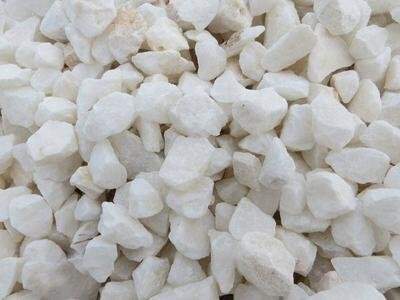What Is Dolomite?

A typical mineral that forms rocks is dolomite. It is the main constituent of the metamorphic rock known as dolomitic marble as well as the sedimentary rock known as dolostone.
Modern sedimentary environments rarely include dolomite, although dolostones are widely distributed throughout the rock record. They may cover a wide geographic area and range in thickness from hundreds to thousands of feet. The majority of dolomite-rich rocks were originally calcium carbonate muds that underwent postdepositional alteration by pore water rich in magnesium to become dolomite.
Another typical mineral found in hydrothermal veins is dolomite. It frequently coexists with barite, fluorite, pyrite, chalcopyrite, galena, or sphalerite in that location. It frequently appears as rhombohedral crystals with occasionally curved faces in these veins.
Physical Properties of Dolomite
Dolomite has three ideal cleavage directions. When the dolomite is fine-grained, this may not be noticeable. However, when it is coarsely crystalline, a hand lens can be used to easily see the cleavage angles. When exposed to cold, diluted hydrochloric acid, dolomite reacts extremely weakly; however, if the acid is warmed up or if the dolomite is powdered, a significantly greater acid response will be seen.
Uses of Dolomite
Dolomite is useful because of how it reacts with acid. In the chemical business, soil conditioning, stream restoration, and acid neutralization, it is employed.
Magnesium is found in dolomite, which is also used to make glass, bricks, and ceramics. It is also utilized as a sintering agent and flux in the manufacture of metals.
Many lead, zinc, and copper resources are hosted by dolomite. These deposits are created when hot, acidic hydrothermal fluids rise from the depths and encounter a unit of dolomitic rock. The dolomite reacts with these solutions, resulting in a pH reduction that sets off the precipitation of metals from the solution.
A rock used as an oil and gas reservoir is dolomite. Volume is decreased when calcite is transformed into dolomite. As a result, the rock may develop pore openings that allow the migration of oil or gas released from neighboring rock units. Because of this, drilling for oil and gas frequently targets dolomite as a reservoir rock.
Magnesium is found in dolomite, which is also used to make glass, bricks, and ceramics. It is also utilized as a sintering agent and flux in the manufacture of metals.
Many lead, zinc, and copper resources are hosted by dolomite. These deposits are created when hot, acidic hydrothermal fluids rise from the depths and encounter a unit of dolomitic rock. The dolomite reacts with these solutions, resulting in a pH reduction that sets off the precipitation of metals from the solution.
A rock used as an oil and gas reservoir is dolomite. Volume is decreased when calcite is transformed into dolomite. As a result, the rock may develop pore openings that allow the migration of oil or gas released from neighboring rock units. Because of this, drilling for oil and gas frequently targets dolomite as a reservoir rock.